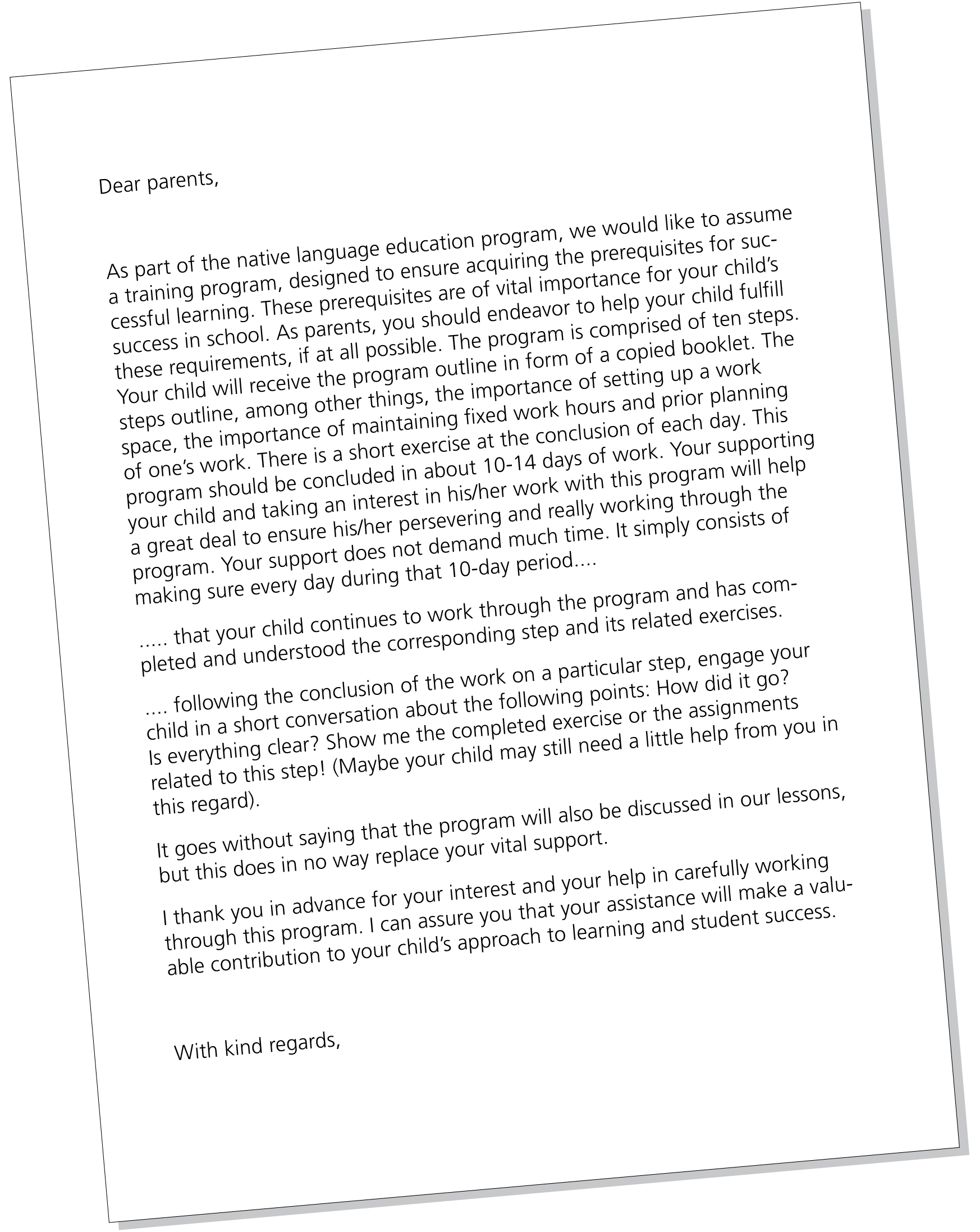In the foundations volume of this series (Handbook and workbook: Foundations and backgrounds) the following passage relates to the challenges and tasks of HLT instructors (chapter 2.3):
The problem with all these unwritten rules and norms is the fact that for the “locals“ (at least those from educated, successful families), these expectations are so clear and internalized that they are hardly ever communicated explicitly. When even HLT instructors require some time to grasp the most important rules and expectations, this is much more difficult for parents or children who are distanced from education or more disadvantaged. The innovative 10 -step program in Part II of this volume intends to address this by providing help in very specific and practical ways. It introduces the readers to the fundamental prerequisites for working effectively and for success in school. This includes, for instance, setting up quiet a work place, regular study hours, working with a plan, etc. For every step there are explanations, tips, and concrete implementation exercises. Working through the entire program (in a manageable 10–14 days) promotes practicing and rehearsing of the most important unwritten “rules of the game”, which would otherwise be unknown to many children and adolescents of socially and educationally less priviledged families.
For using the 10-step training program, a number of different scenarios are possible:
- The program is being discussed and worked through in its entirety by the whole class, e. g. as a common project “we optimize our learning”. For younger children, the steps 5–10 must be age-appropriately simplified and adjusted.
- The program is administered with a smaller group of motivated students who would, naturally, also communicate their experiences to the others.
- The program is being worked through in conjunction with individual students or a few students who are educationally weak and receive little parental support. The parents and, if possible, the classroom teachers, should absolutely be included. In this case, the program has the function of an emergency measure, as an effort to save the students‘ jeopardized school career.
Working through this program without any parental support can be an overload for many students. It is therefore all the more important to inspire the parents‘ support and enthusiasm for this project within the context of HLT , particulary since the instructor generally only sees the students once per week. What the HLT instructors can accomplish in terms of a successful project with the 10-step program can be summarized as follows:
Sample of an information sheet for the parents
(template intended for adaptation as needed)







